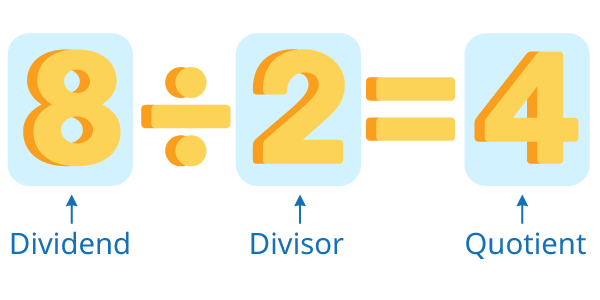How to Solve Division Problems
Learn the parts of a division problem and how to solve them in a few easy steps.
You have 20 cookies and 10 friends. How many cookies should you give each of your friends?
This is a basic division problem.
Division is one of the four basic operations: addition, subtraction, and multiplication are the other three.
Division is a simple operation in which a number is divided. It’s easiest to think of it as a number of objects being divided among a certain number of people, such as in the above example. Of course, you always want to give the same amount to each person to be fair! That’s basically how division works, you divide numbers into equal groups of numbers.
So, how can you solve a division problem? First, you have to know the parts of a division problem.
Parts of a Division Problem
There are three main parts to a division problem: the dividend, the divisor, and the quotient.
The dividend is the number that will be divided. The divisor is the number of “people” that the number is being divided among. The quotient is the answer.

How to Solve Division Problems
Solving simple division problems is closely linked to multiplication. In fact, to check your work, you’ll have to multiply the quotient by the divisor to see if it equals the dividend. If it doesn’t, you’ve solved incorrectly.
Let’s try solving one simple division problem. For example:
12 ÷ 2 =
In this problem, you can see how Happy Numbers helps children visualize the problem. There are 12 oranges. There are 2 placed in each box. How many boxes are there?
The answer is 6.
You can check the answer by multiplying the quotient, 6, by the divisor, 2, (6 x 2) which gives us 12. So, the answer is correct.
What Is a Remainder in Math?
You may have heard of a remainder and wondered, what is a remainder in math?
A remainder in math is used when a division problem doesn’t come out evenly. For example:
11 ÷ 4 =
11 ÷ 4 =
As you can see in the above example of tennis balls, first, the balls are divided into groups of 4. However, after making 2 groups of balls, 3 balls are left that can’t make a group of 4. These are the remainder. So, the quotient is 2 (2 groups of 4 can be made) and the remainder is 3.
To check the work, multiply the quotient, 2, times the divisor, 4. The answer is 8. Then, add the remainder of 3. The answer is 11, which was the original dividend, so the answer is correct.
Division can get more and more complicated as the numbers get bigger. Then, you must use strategies such as long division, estimation, and more to determine the answers. However, with these basic steps, you can solve just about any division problem.
